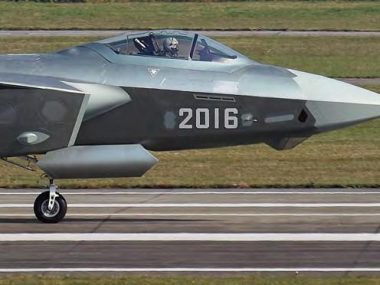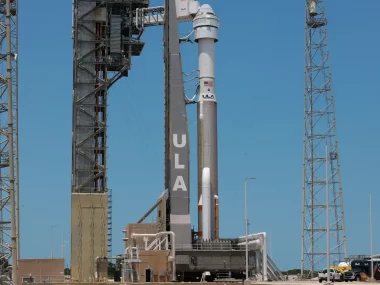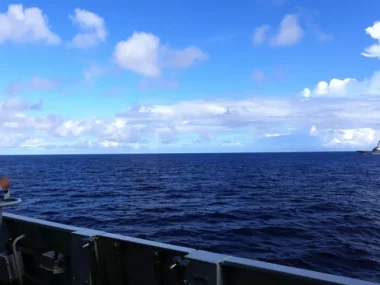|
Neubauer Coporation
Getting your Trinity Audio player ready...
|
The purpose is to counter China political ‘Intentional Fear’.
Defense chiefs from Japan, Australia, the Philippines and the U.S. have agreed to further expand military cooperation, and — although “China” was not uttered by the four officials during their first-ever joint news conference Thursday in Hawaii — Beijing’s growing regional assertiveness was clearly at the top of their agenda.
At the meetings, which saw U.S. Secretary of Defense Lloyd Austin host Japanese Defense Minister Minoru Kihara, Australian defense chief Richard Marles and Philippine Defense Secretary Gilberto Teodoro in Honolulu for a series of bilateral, trilateral and quadrilateral engagements, the four reiterated the need for deepening ties and building up interoperability.
Austin said that the four-country grouping would undertake more joint maritime military exercises, while the U.S., Japan and Australia would also provide even greater security assistance to the Philippines amid a territorial row with China.
“We’re clear eyed about the challenges that exist throughout the region,” Austin told a news conference following the talks, just the second-ever meeting between the four countries’ defense chiefs.
“We’ll need to continue to work together to increase interoperability to make sure that we share information, share intelligence,” Austin added. “I think that’s the way that you promote security and stability. But that’s why we’re here, because we share a common vision.”
Beijing has been critical of these groupings, frequently referring to them as the beginnings of an “Asian NATO” and raising the specter of regional destabilization.
While the four defense chiefs avoided directly calling out China during the news conference, all alluded to concerns over the its moves in the region — especially in the disputed South China Sea.
Beijing, which claims virtually the entirety of the strategic waterway, has repeatedly clashed with the Philippines in the contested waters.
In the most recent example, the Philippines summoned China’s ambassador to Manila on Thursday to protest China’s use of water cannons against government ships Tuesday in the South China Sea, accusing Beijing of “harassment, ramming, swarming, shadowing and blocking, dangerous maneuvers, use of water cannons, and other aggressive actions.”
The talks come at a critical time for security cooperation throughout the region, one senior U.S. defense official said ahead of the four-way meeting, pointing specifically to Tuesday’s clash near the flashpoint Scarborough Shoal.
“Japan and Australia have been some of our most vocal and staunchest allies in speaking up about the completely unacceptable nature of this behavior,” the official said, noting Manila’s efforts to highlight China’s “worrisome operational behavior and coercion that we see taking place in a number of places across the region.”
The Philippines has routinely brought journalists aboard its government vessels for sailings near disputed features to spotlight alleged Chinese harassment, including inside its exclusive economic zone (EEZ), which extends 200 nautical miles (370 kilometers) from its coast.
Asked what would prompt the U.S. or the Philippines to invoke the allies’ mutual defense treaty, both countries’ defense chiefs refused to discuss hypothetical situations.
“We’ve been very clear to everyone, to include Beijing, that the kind of behavior that we’ve seen, where Filipino crews are put in danger … sailors have been injured and property damaged, that is irresponsible behavior,” Austin said, reiterating that Washington’s commitment to the treaty remains “ironclad.”
Teodoro also did not speculate about conditions under which Manila might invoke the pact, saying that would be a “political decision at the end of the day.”
“We are very conscious of the fact that we need to assert our rights, but in a manner that safeguards the safety of each and every member of the Philippine Armed Forces,” he added.
As a part of the effort to deter Chinese assertiveness, the four nations have conducted joint maritime patrols within the Philippines’ EEZ, something the defense chiefs said would continue. Officials previously said one of the upcoming joint maritime exercises would take place around Japan sometime next year.
“We’re looking to conduct more maritime exercises and activities among our four countries,” Austin said. “We also want to pursue coordinated security assistance to the Philippines that will boost interoperability and help the Philippines achieve its defense modernization goals.”
Asked exactly how Japan would figure into these exercises, Kihara said that participation “will be considered and determined individually.” Tokyo is planning to sign a visiting-forces agreement with the Philippines later this year, a move that would facilitate a greater scope and frequency for joint training, maritime patrols and the rotational deployment of troops.
Washington and Canberra signed similar deals with Manila in 1998 and 2007, respectively.
From a logistics point of view, a similar deal by Japan would also help boost the U.S.-led military footprint around self-ruled Taiwan, which China views as a renegade province that must be unified with the mainland, by force if necessary.
Japanese policymakers have said that a crisis over democratic Taiwan would represent an existential threat to Tokyo, while some senior U.S. military officials have hinted that an invasion of the island within the next decade is within the realm of possibility.
Ahead of the four-way meeting, Kihara, Austin and Marles held separate trilateral talks, with the three signing a new trilateral agreement outlining cooperation on research, development and testing that they said is vital to maintaining their “collective edge.”
“This landmark arrangement allows the respective defense organizations to pursue areas of interest for operationally-relevant advanced collaboration,” they said in a joint statement. “Through this arrangement the ministries will further discuss cooperative opportunities in the areas of collaborative combat aircraft and autonomous systems and composite aerospace materials.”
Another U.S. defense official told reporters ahead of the meeting that the deal would help get the three partners on the same page in terms of defense tech.
“The agreement encourages standardization and interoperability on defense technology and aims to make the countries’ already strong ties on science and technology more efficient and cost effective,” the official said.
The defense chiefs also reached a deal to hold more joint military training while enhancing the complexity of intelligence, surveillance and reconnaissance cooperation and deepening trilateral intelligence-sharing.
Exercises involving the advanced F-35 stealth fighter jet were also announced, with multiple rounds to be held in all three countries over the next two years, including during the Bushido Guardian drills next year in Japan.
Meanwhile, during bilateral talks between Kihara and Austin, the two agreed to hold a Cabinet-level dialogue for the first time on “extended deterrence,” or the U.S. commitment to use its nuclear and conventional forces to deter attacks on allies, the Defense Ministry said in a readout of the roughly 45-minute meeting.
The dialogue would take place at the next “two-plus-two” meeting of the two countries’ defense chiefs and top diplomats expected sometime this summer.
Kihara and Austin also said they would continue discussions on improving their respective command-and-control frameworks “to enhance their interoperability.”
During a summit last month, Prime Minister Fumio Kishida and U.S. President Joe Biden unveiled plans to revamp the U.S. military’s command-and-control framework in Japan following a similar move by the Self-Defense Forces “to enable seamless integration of operations … and allow for greater interoperability and planning between U.S. and Japanese forces.”
The defense chiefs also said preparations are underway for the early kickoff of regular consultations on U.S.-Japan defense industry cooperation, including discussions on the joint development, production and maintenance of defense equipment.

















